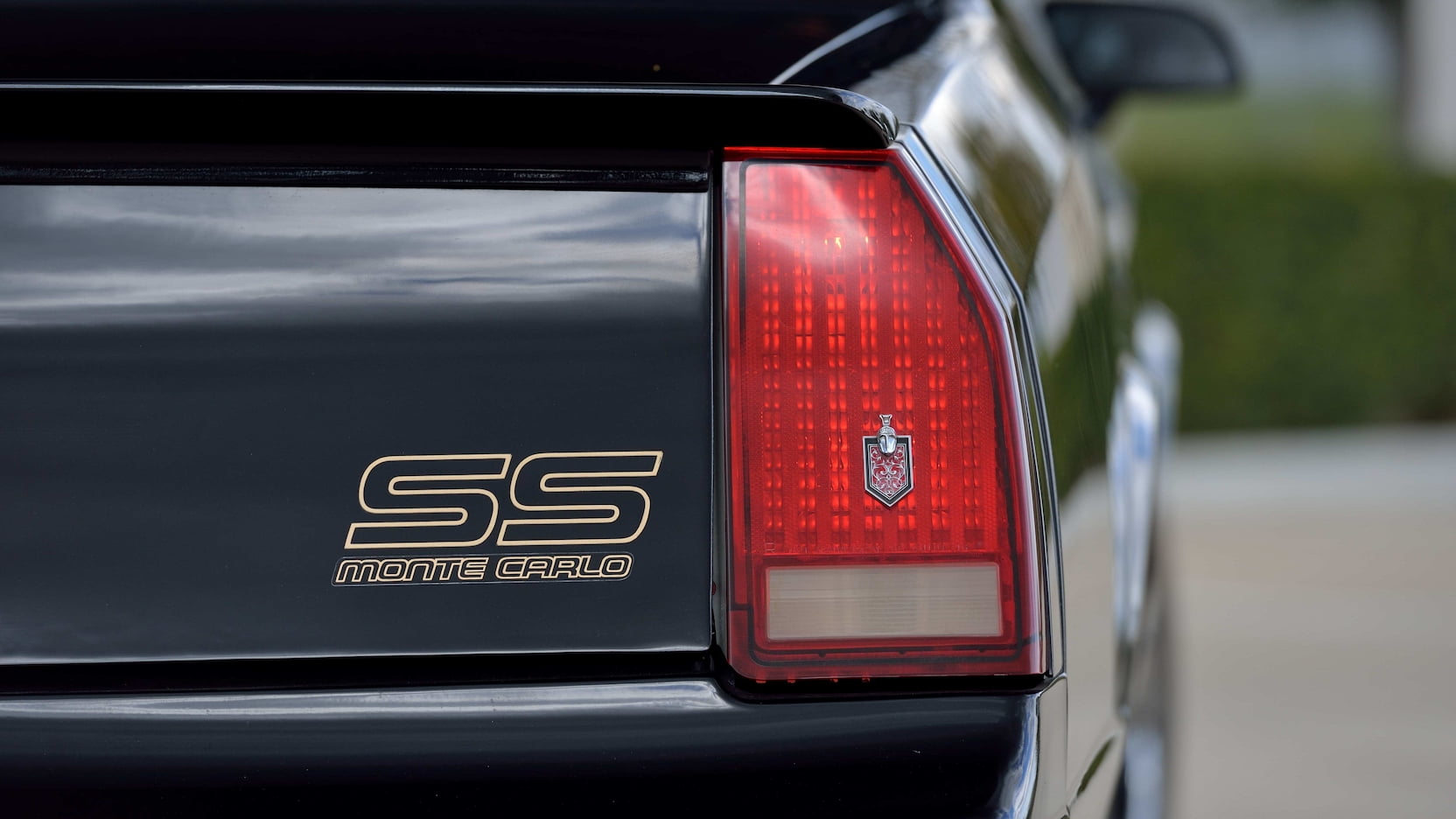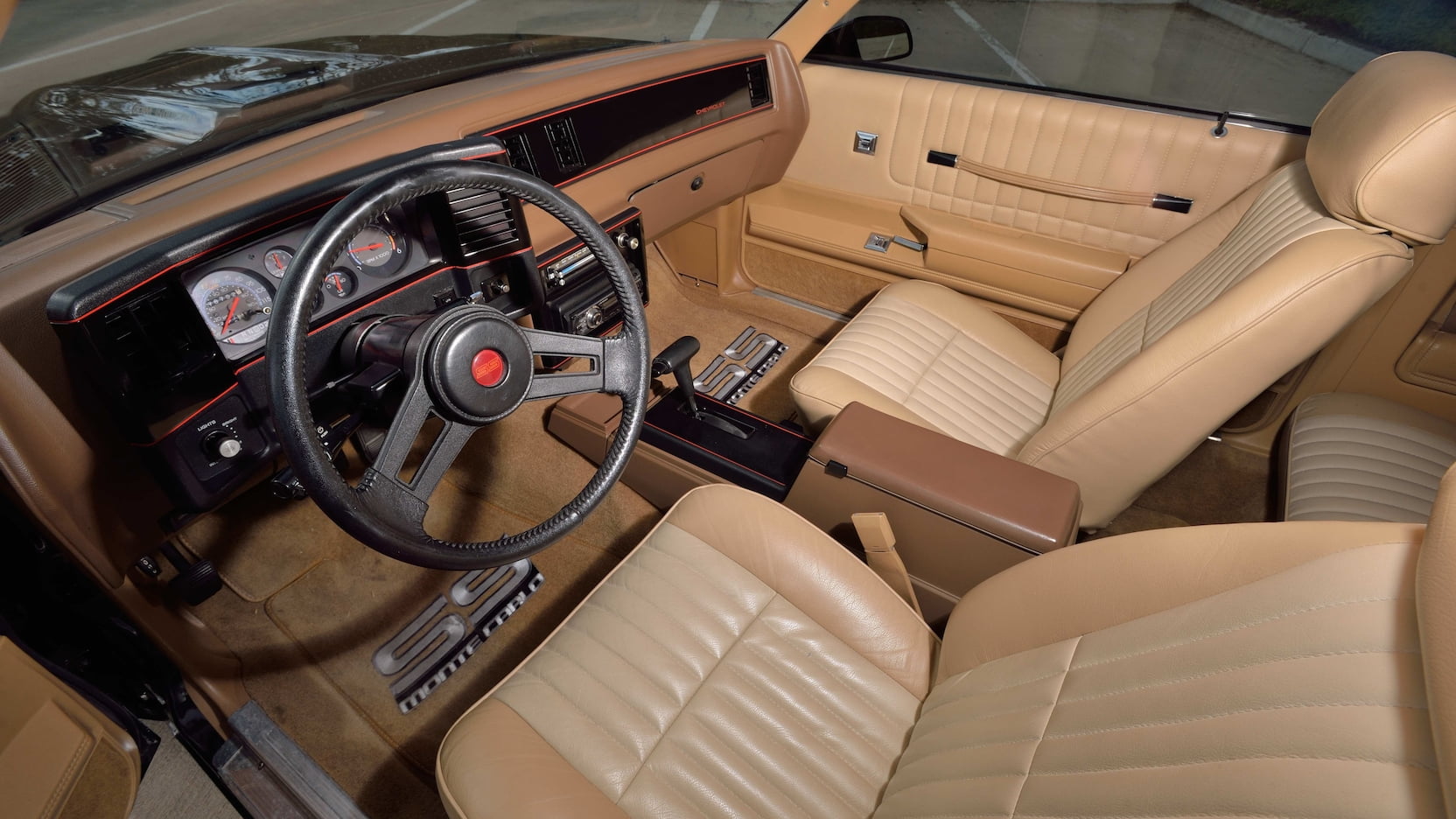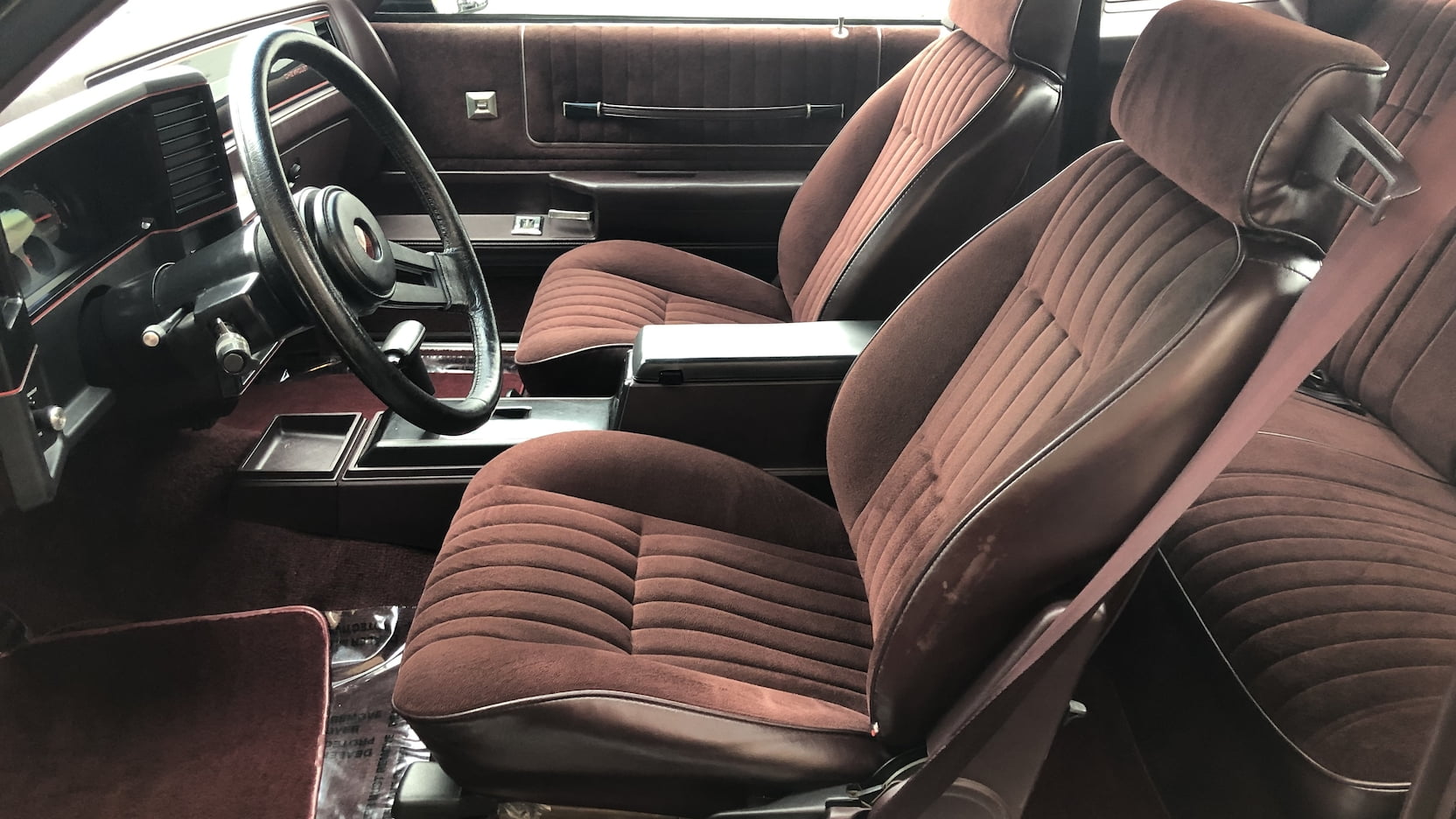Media | Articles
1983–88 Chevy Monte Carlo SS buyer’s guide
Buick’s turbocharged V-6-powered Regal Grand National was the quickest muscle car of the 1980s and still grabs all the attention, but Chevy’s V-8-powered Monte Carlo SS owned the Grand National when it came to sales. During the mid-1980s, well over 100,000 gearheads walked into Chevy dealers and rolled out in a new Monte SS. That’s more than double the number of turbo Buicks sold. Super Sport Monte Carlos were a fixture at every cruise spot and street racing haunt in America.
Along with the Regal, Oldsmobile Cutlass, and Pontiac Grand Prix, the Monte Carlo was on GM’s rear-wheel-drive G-body platform, which launched in 1978 and was restyled in 1981. Large two-door coupes were popular back then and sales were strong, and by 1983, fun was beginning to creep back into the car world after a dismal decade of smog motors and dreadful performance. The 1979 launch of the Fox-body Mustang lit the fuse, the 1982 introduction of an all-new Chevy Camaro and Pontiac Firebird spread the flames, and everyone knew the C4 Corvette was getting close.
In 1983, to better the Monte’s aerodynamics on NASCAR’s super speedways, Chevy developed a sleek aerodynamic nose for the coupe and developed the Super Sport model to get it on the street. It was option code RPO Z65, and it was the first Monte Carlo SS since 1971. Sales lasted until 1988, one model year beyond Buick’s run of turbo Regals, which crescendoed with its 547 GNXs.
Today, American performance cars from this era are quickly gaining value as a new generation of enthusiasts are buying up the Grand Nationals, IROC Camaros, Pontiac Trans Ams, and Firebird Formulas they lusted after in high school. Monte Carlo SS values are also riding this wave, but these cars are still affordable and because Chevy sold a ton of them, they’re easy to find. Here’s what potential buyers need to know.
Monte Carlo SS changes over the years
Marketplace
Buy and sell classics with confidence

In 1983, Chevy launched the Monte Carlo SS in just two colors, white and dark blue, although most were white and they all got a blue cloth interior. Like every other Monte, it had a split bench seat and a column shifter, but the F41 handling suspension was part of the package as well as steel 15×7-inch five-spoke wheels and Goodyear Eagle GT rubber (215/65-15) with raised white letters. Inside, “SS” was embroidered on the headrests and there was a full bank of round instruments. The exterior was festooned with a slim rear spoiler and Monte Carlo SS decals on its doors and trunklid. No chrome, the sport side mirrors were body color, and the grille, door handles, and window trim were black.
Under the hood was the Camaro’s High Output version of the 305-cubic-inch small-block (code L69), with a Rochester Quadrajet four-barrel carburetor on an aluminum intake manifold and 9.5:1 compression ratio. The 305 HO’s camshaft was taken from the 1982 Corvette’s L81 V-8 and the combination was rated at 175 hp and 240 lb-ft of torque according to the May 1983 issue of Car and Driver. Not bad for 1983, although the Monte’s Turbo 350 three-speed automatic transmission was from the Stone Age and its open differential meant owners did dogleg burnouts out of the McDonald’s parking lot.
In 1984, Dale Earnhardt switched from Ford to Chevy and the Monte Carlo SS starting kicking butt on the track, winning the Daytona 500 and Earnhardt’s Wrangler-sponsored Monte snatching victory at Talladega. The street car was essentially unchanged for the new model year, but a limited-slip rear end was now optional (RPO G80) and its output rating climbed to 180 hp. The price was still just over $10,000 and about $12,000 loaded with options like power windows and cruise control. Sales exploded, jumping from 4714 cars in 1983 to 24,050 in 1984.

There are sources that say three SS Monte Carlos were built late in 1984 with the new overdrive TH200-4R four-speed automatic transmission. This is unconfirmed, but the new transmission was standard for 1985, along with a stiffer 3.73 rear axle ratio, up from the 3.42. Chevy also added colors, bringing the total to four: Silver Metallic, Dark Maroon Metallic, White, and Black, and Chevy modified the exterior graphics by adding a stripe.
For the first time, buyers could choose an interior color, between Gray and Maroon cloth. More important, Chevy added optional bucket seats with a console and a muscle car proper floor-mounted shifter. T-tops were also offered for the first time. Despite the Camaro, Firebird, and Corvette getting 305 V-8s with Tuned Port Injection, the Monte’s engine remained unchanged. Sales spiked to an incredible 35,484 cars.
In 1986, Buick intercooled its turbo Regals, but the Monte Carlo SS was unchanged except for a new set of five-spoke alloy wheels, still sized 15×7, and a third brake light. Horsepower remained at 180 hp, which was now 55 hp less than the Buick, but sales shot up again to 41,164. Buick only sold 5512 Grand Nationals in 1986.
Chevy massaged the exterior graphics again in 1987 and redesigned the Monte’s rear bumper and taillights. It also finally replaced its 85 mph speedometer with a 120 mph unit, but everyone knew the G-body was on a death clock. GM wanted the plant in Texas to build SUVs and the turbo Buicks and Monte Carlo SS would be phased out. Sales of the boosted Buicks skyrocketed to over 20,000 and Chevy sold 33,204 SS Montes. Although there were no turbo Buicks for 1988, Chevy continued to built the Monte Carlo SS for one more year, selling 16,204 before the Monte Carlo was replaced by the lame front-wheel drive Lumina in 1989.
The Aerocoupe

Its success in the showroom was directly linked to the Super Sports success on the racetrack. A Monte Carlo SS was driven to the Winston Cup Championship in 1984 by Terry Labonte, 1985 by Darrel Waltrip, and in 1986 and 1987 by The Intimidator. But staying ahead of Bill Elliott’s Thunderbird wasn’t easy. To do so, Chevy’s engineers went back to the wind tunnel and created the Monte Carlo SS Aerocoupe in 1986.
It was an aerodynamic special, much like the Dodge Daytona, Plymouth Superbird, and Ford Talladega, from 1969 and 1970. To improve the Monte’s aerodynamics for competition, Chevy replaced its upright rear glass with a convex design that stretched back into the decklid’s space, creating what was essentially a fastback roofline. Its profile was a little funky, but it worked, adding speed and stability on the track. It worked so well, Pontiac created the Grand Prix 2+2, which featured an even more radically shaped rear window.
Only 200 Aerocoupes, RPO B5T, were sold in 1986, distributed in the spring to dealerships in the Southeast. For 1987, its option code was changed to RPO Z16, and it was widely available, with 6052 sold. The Aerocoupe tested by Car and Driver in August of 1986 cost $16,325.
Mild performance

These cars were quick for their day, especially from 1983–85, before the Mustang GT, Turbo Regals, and IROC Camaros found full song, but they are slow by today’s standards and will get smoked by a V-6 Camry.
Magazine road testers at the time were blown away by the Monte’s acceleration. In 1983, Car and Driver tested an SS that went from 0-60 mph in about 8.2 seconds and through the quarter mile in 16.1 at 85 mph. Motor Trend’s results were similar. Both praised the Monte’s acceleration and handling, but complained about its bench seat interior. The television show Motorweek said, “This is one fast 3500-pound coupe.”
And in 1985, Popular Mechanics pitted a new Monte Carlo SS against its modern rivals and a pack of stock classic muscle, including a 1965 Pontiac GTO, a 1970 LS6 Chevelle, and a 1970 Oldsmobile 442 W-30. The Monte ran the quarter mile in 16.2 seconds at 83 mph, which was considerably slower than all the classics, and mid-pack amongst its peers. Although it was quicker than the 1985 Oldsmobile 442 and the Buick Grand National (remember the GN didn’t get intercooling and big horsepower until 1986), it was outrun by the Mustang GT, the Pontiac Trans Am, and, embarrassingly, by the front-wheel drive Dodge Shelby Charger.
What to look out for on a Monte Carlo SS

According to Hemmings, “The eighth digit of any SS VIN should be a ‘G,’ and match between the sticker on the underside of the trunklid and driver’s side door. The RPO codes B4V (high-output engine), Z56 (body) and F41 (sport suspension) should also be present.” If this is not the case, walk away. That car is not a real SS, but a clone built from a regular Monte Carlo.
Rust can be a problem, especially in the rear of the car. And don’t just check the body panels. These are full-frame cars, so check the rails. T-top cars should be inspected thoroughly for cancer, as they’ve probably gotten leaky over the years as their seals have dried up.
Many of these cars have been modified over the last three decades at the hands of their second, third, fourth and fifth owners. We’ve seen everything from suspension upgrades, four-wheel disc brake kits, and cars converted to manual transmissions with available kits. Engine mods are extremely common, and in the last 10 years, LS engine swaps have become a thing. But sending too much horsepower through the Monte’s stock four-speed automatic and differential will cause them to fail.
Most parts are available in reproduction, including fresh exterior stripe kits. Before buying anything, dig around on www.montecarloss.com, www.gbodyforum.com, and www.montecarloforum.com for more information.
Monte Carlo values are up

In today’s collector car market Monte Carlo SS values don’t vary much by year, but the 1985 and later cars are worth a bit more, no doubt due to their bucket seats, floor shifters, and more attractive wheels. Cars built in 1983 and 1984 are worth an average of $11,600 according to the Hagerty Valuation Tool, with the best examples averaging about $20,000. Stock, unmolested, low-mileage cars in #1 condition built from 1985–88 usually cost a few grand more and T-top cars cost about five percent more. All those numbers are up about 10 percent over the last three years.
The most valuable, however, are the Aerocoupes. These cars average out at $15,200, with examples in Concours condition averaging $27,800. Finding a Monte Carlo SS, even an Aerocoupe, in #4 (Fair) condition for less than $10,000 is possible, but it’s getting harder every day. If you want to snatch up a great car at a palatable price, the time might be now.








I just got a 86 Monte ss today I’ve wanted one since 1989 when I did everything I could to make my 78 cutlass Supreme look like it now I’d rather have the class but here I go car needs alot of work.